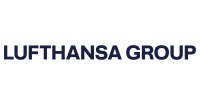Towards Shared Business Trajectory / Trajectory Based Operations
Timeline


Description
For NM, this project is a continuation of the CEF 2015 IPs 2015_141_AF5 and 2015_106_AF4 (stopping with NM release 24.5). It covers implementation items to be released in operations from NM Releases 25 to 27.5 for the completion of the Family 5.6.1 - Upgrade and Implement Flights Information Exchange System and Service- as described in the Deployment Programme 2017.
This project is the enabler for
NSP Strategic Objective 2: Deploy interoperable and effective information management systems
NSP Strategic Objective 5: Facilitate business trajectories and cooperative traffic management
SABRE is also continuing implementation related to Flight Planning aspects / FF_ICE/1 (Flight & Flow Information for a Collaborative Environment) started in project 2015_106_AF4.
Lufthansa Group / Lufthansa Systems are continuing implementation initiated in 2016_100_AF4 IP.
There is no redundancy between IPs 2017_002_AF5 (Aeronautical Information Exchange system for Airlines FOC at Lufthansa & Air France) / 2017_053_AF3 (Implementation of rolling ASM/ATFCM) and this IP.
2017_002_AF5 addresses processes related to the exchange of Aeronautical data, 2017_053_AF3 addresses processes related to the exchange of Airspace data while this IP relates to processes related to the exchange of Flight Information.
To allow for a clear distinction between the systems’ versions implemented through CEF 2015 IPs and CEF 2016 IPs referred above and the systems’ versions subsequently implemented through this IP (2017_053_AF3), NM, Sabre, Lufthansa Systems and Lufthansa Group will organise for a robust requirements and implementation management process. It will allow to clearly identify the different implementation items per different systems’ versions (hence IPs) and to make sure effort / costs can be traced and allocated to that level without any redundancy.
In a continued implementation process, the start of the implementation of a new release -i.e. the identification of concerned business requirements and development of detailed specification- is always happening quite some time before the finalisation of the implementation of a previous version. This is the reason for the overlap in time (more than one year) between CEF 2015 IPs and CEF 2016 IPs referred above and this IP.
Specific objectives:
For NM the main objective of this IP is the exchange and negotiation of 4D Trajectory (including flight performance information) between NM and airspace users and ATC (ANSPs, Airports) via the implementation of the ICAO FF-ICE (FF-ICE/1 phase 2 and Phase 3 (Planning phase) provisions, procedures and processes in compliance with the yellow SWIM TI Profile. Furthermore NM will contribute to the definition of processes, procedures and any standard related to FF-ICE/2 (Execution phase) in relation to ICAO and with European partners. This is to serve a later implementation, i.e. in 2024-2025.
(It is to be noted that implementation Projects 2015_141_AF5 and 2015_106_AF4 are “limited” to deliver the FF-ICE/1 in compliance with the Yellow SWIM TI profile and according to FIXM 4, concerning the 4D trajectory exchange and negotiations processes between NM, Airspace Users and ATC in pre-departure phase. In the NM roadmap, this is also referred as FF-ICE/1 phase 1, FIXM based interoperability).
NM will adapt and deploy its systems (two releases a year) to pursue this objective.
SABRE is also continuing implementation related to Flight Planning aspects / FF_ICE/1 started in project 2015_106_AF4.
SABRE will participate in this project to adapt their Flight Planning Systems and develop operational procedures in relation to FF-ICE, FIXM, SWIM / B2B compliant with NM releases.
For Lufthansa Systems, one objective is to implement upgrades to the flight planning system Lido/Flight related to missing FF-ICE/1 components not included in a predecessor project 2016_100_AF4 (which had the focus on initial FF-ICE/1 readiness) These are special functionalities to manage the processing of flight response messages from the Network Manager to the FOC. Within the 2016 project primarily functions for the 4D trajectory filing from FOC to NM will be implemented. It is not in scope to react on the feedback from NM, .e.g. automatic processing of flight reject information (RAD regulations) or profile tuning restrictions feedback, or future SID/STAR requirements based on the runway in use ( actually validated in PJ18, SESAR 2020). Core new developments will include the expected Planning Service from Network manager to coordinate up to 24h before the flight event the reference business trajectory (RBT). Based on the SESAR 2020 research solutions, it will be required in near future to coordinate with NM the flight route considering the capacity aspects offered from Air Traffic Control. Furthermore Lufthansa Systems will deploy the Trial Service offered from NM to synchronise the flight route with overall ATCFM regulations. Lufthansa Systems will deploy required functionalities in all relevant systems, that means covering flight planning, flight monitoring and cockpit applications. This will ensure a seamless flight information availability for involved users (flight dispatcher, flight watch officers or pilots. In addition new functionalities for automatic processing and negotiation discussions with involved external stakeholder like NM, ATC or airports will be deployed.
The main activities performed at LH Group Airlines FOC (Flight Operational Centre) systems will be the deployment of relevant enhanced flight planning services and operational steering capabilities . The project aims in addition to enable the airlines of the Lufthansa Group to deal with the enhanced and more dynamic network information data that will be exchanged with Network Manager using the Yellow SWIM TI Profile and related to Air Traffic Flow and Capacity Management (ATFCM) –as it impacts on the Flight planning and pre-tactical and tactical operational steering-.
In support to this, the implementation project at LH FOC system aims to define & develop use cases and user stories to exchange trajectory related data upon SWIM as well as to support exchanges related to ATCFM pre-tactical and tactical plans, ATFCM measures and STAM coordination upon SWIM.
Expected Results:
The project will provide for the deployment of NM Systems (NM Releases 25 to 27.5) allowing for the operational processes and procedures supporting the ICAO FF-ICE (FF-ICE/1 (Planning and pre-departure phases) in compliance with the yellow SWIM TI Profile.
The services provided will then be compliant with
the ICAO provisions related to FF-ICE, following the European implementation guidelines
the EUROCONTROL SWIM specifications.
The services will use the FIXM data exchange model.
(Draft) FF-ICE/2 procedures will be available.
SABRE will have its System adapted and compliant with NM releases while operational procedures and training material will be available.
Lufthansa Systems will have its System adapted and compliant with NM releases while operational procedures and training material will be available.
All relevant SWIM flight services required for flight information exchange will be deployed at Lufthansa Group Airlines participating airlines ATFCM related services will also be deployed upon SWIM.
Additionally, the NM services will continue to support the legacy messaging data exchanges in order to allow the progressive migration of the stakeholders to SWIM.
To support global customer base and operations, SABRE needs also to continue to support legacy messaging data exchange.
Performance Benefits:
The project provides for increased fidelity in the representation of the traffic demand. This leads to better capacity and route utilisation and consequent delay and fuel consumption reduction. Increased interoperability and compliancy to e-FPL (extended Flight Plan) standards across systems lead to general efficiency improvements and cost reduction. The project also enables the delivery of an increased ATCO productivity at ACC and TMA units, and the progressive dismantling of legacies (e.g. OLDI - On-Line Data Interchange) with high maintenance costs.
Based on previous CBAs, at a first estimation and under the assumption of PCP full deployment:
The project represents the network ""indirect"" contribution to improve ATCO productivity at network level, which represents a gain of some €200 million (discounted value, see PCP CBA).
A further increase of flight efficiency and capacity as of 2024 with an estimated discounted benefit of some €35 million.
A further increase in slot management utilisation for the Lufthansa group and indirectly for Air France with an estimated discounted benefit of some €10 million."
Additional Information
- Project Type: Network Manager
- CEF Call Year: 2017
- Civil/Military: Civil
- Multistakeholder: Yes
- Main AF: AF5 - Initial System Wide Information Management
- Sub AF: S-AF 5.6 - Flight information exchange
- Progress Percentage: 100%
